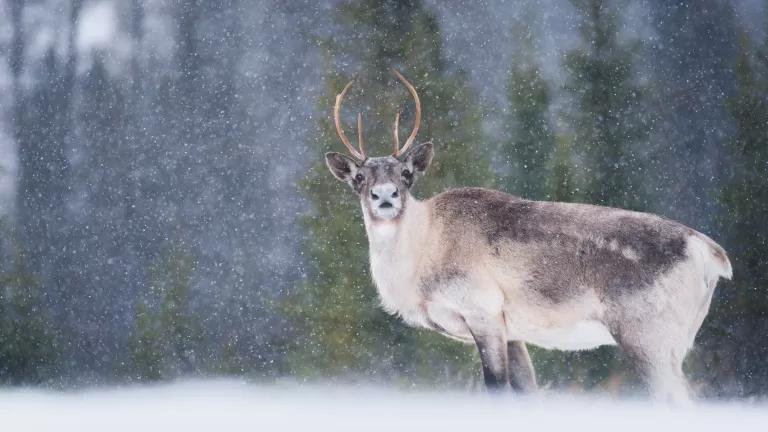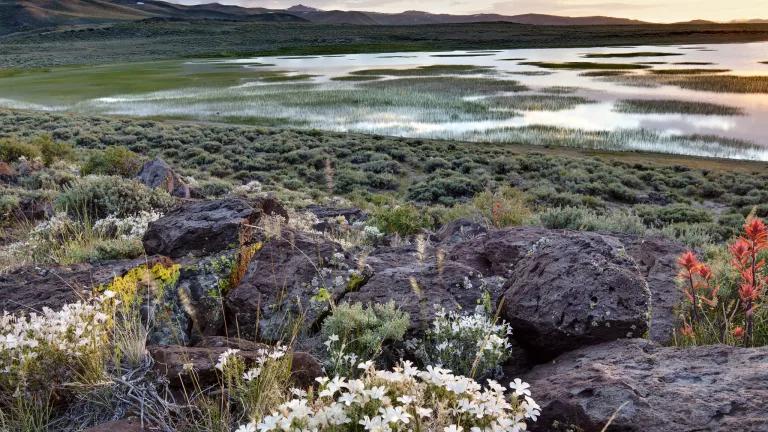Montana’s Forests: Where Oil and Wildlife Don’t Mix
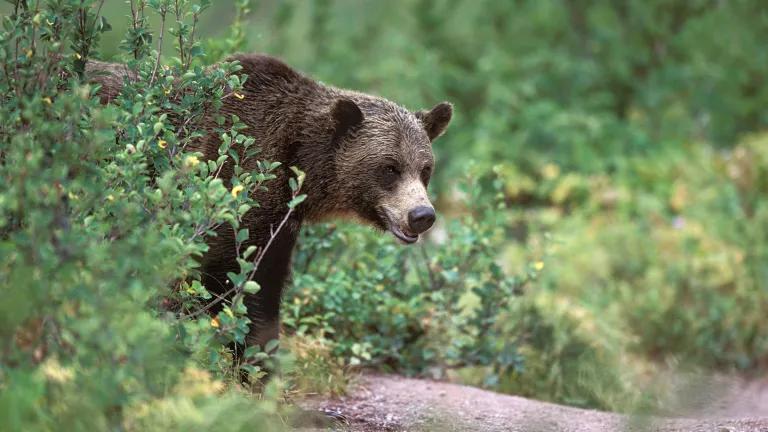
Montana forests—home to grizzly bears and many other sensitive species—are at risk from the Trump administration’s latest proposed rule.
One reason I’m so grateful to have grown up and spent most of my life in Montana is the time I’ve been fortunate enough to spend in the woods. To me, forests are places of wonder and wildness, where elk bugle in the aspens, cutthroat trout swirl in cold mountain streams, and, on occasion, I might glimpse a grizzly bear feeding on berries or sauntering across a high meadow.
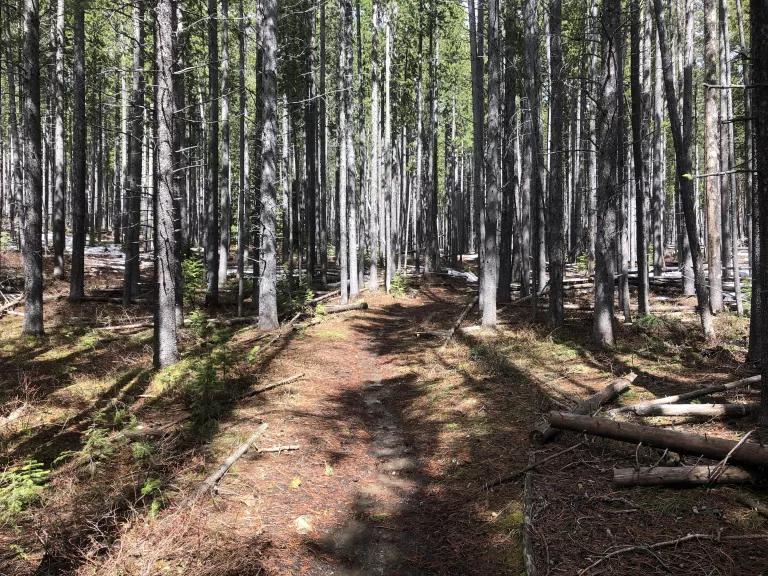
By contrast, the Trump administration’s new proposal to expand oil and gas development on national forests envisions the woods as a place where the fossil fuel industry—and its drill pads, access roads, pipelines, power lines, helicopters, vehicles, noise, and pollution—should expand its destructive footprint.
The proposed rule is worrisome for several reasons. As my colleagues have explained, it would erase long-standing environmental review requirements and cut the public out of important opportunities to provide input. It could also inhibit the United States Forest Service’s ability to require that Indigenous People’s concerns be recognized and addressed, as it did in the long-running dispute over energy leases in the Badger-Two Medicine area in northwestern Montana. Moreover, the rule would exacerbate climate change, which disproportionately harms communities of color, tribal nations, and low-income communities.
The proposed rule also poses a danger to wildlife. Dozens of animals designated as “species of concern”—those already at risk because of declining population trends or threats to their habitats—call Montana’s forests home.
Among them is the grizzly bear, a species that, according to the Piikani Nation Grizzly Treaty of Solidarity, many Indigenous tribes consider “our ancestor, our relative.” Reflecting their knowledge and practices “since time immemorial,” more than 200 tribal nations recently joined this treaty, now the most-signed treaty in U.S. history. It commits to conserving the great bear, in part by “provid[ing] a safe space and environment across our historic homelands we once shared with the GRIZZLY”—stolen lands that include today’s national forests.
Listed as “threatened” under the Endangered Species Act (ESA), grizzlies are especially sensitive to roads, the traffic they create, and the increased human access roads provide. Some bears are attracted to forest roads as travel routes; this can make them more susceptible to poaching and to being killed as a result of conflicts with humans. Other bears avoid roads with even occasional traffic, effectively reducing available habitat for those animals where roads cut through important feeding areas such as riparian corridors and berry patches. A 2012 study advised that limiting roads built for resource extraction would be “a crucially important tool” for reducing impacts to grizzlies and other wildlife.
For the past year, a citizen council appointed by Montana’s governor has been developing management recommendations for grizzlies based, in part, on a recognition of the “continued importance of public lands” to their ongoing recovery. And just this summer, a federal court rejected the Trump administration’s attempts to remove ESA protections from Yellowstone-area grizzlies, in part because their small population and isolation—due largely to habitat loss—put their long-term genetic health at risk.
Issuing a proposal that could further threaten the bears and degrade the lands they depend on—in direct contrast to these recent events and their collective emphasis on habitat protection—is strikingly senseless and tone deaf.
Other sensitive species could also be in jeopardy. An analysis conducted by Defenders of Wildlife found that new oil and gas development on national forests and grasslands in Montana could occur on lands that serve as important habitat for animals such as Canada lynx, bull trout, wolverine, greater sage grouse, and least tern.
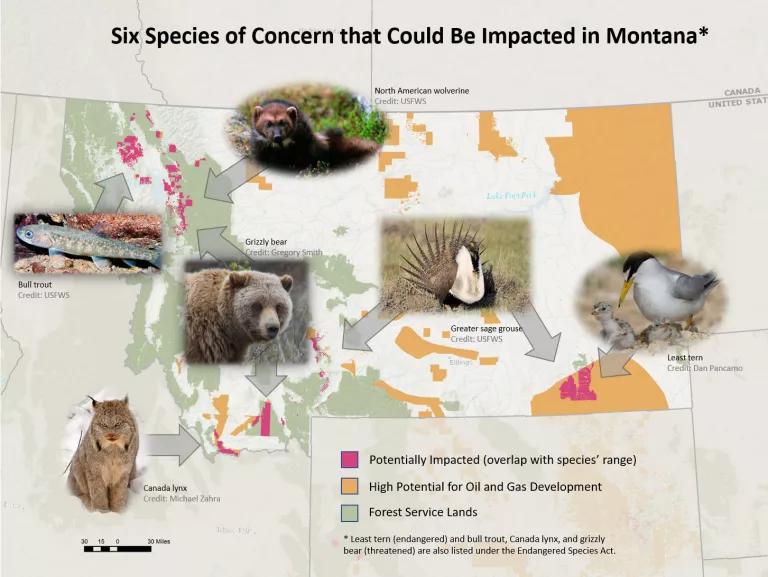
For millennia, people and wildlife have coexisted across the landscape now called Montana. Today, it is a place renowned for its state animal—the grizzly bear—and remarkable abundance and diversity of other species. It’s also known for its clean air, cold water, and wild lands. National forests and, as the Piikani Nation treaty states, the “principals of caring for Mother Earth that is today called conservation,” are major reasons why. These values—not oil and gas companies—should continue to have priority in Montana’s woods.

